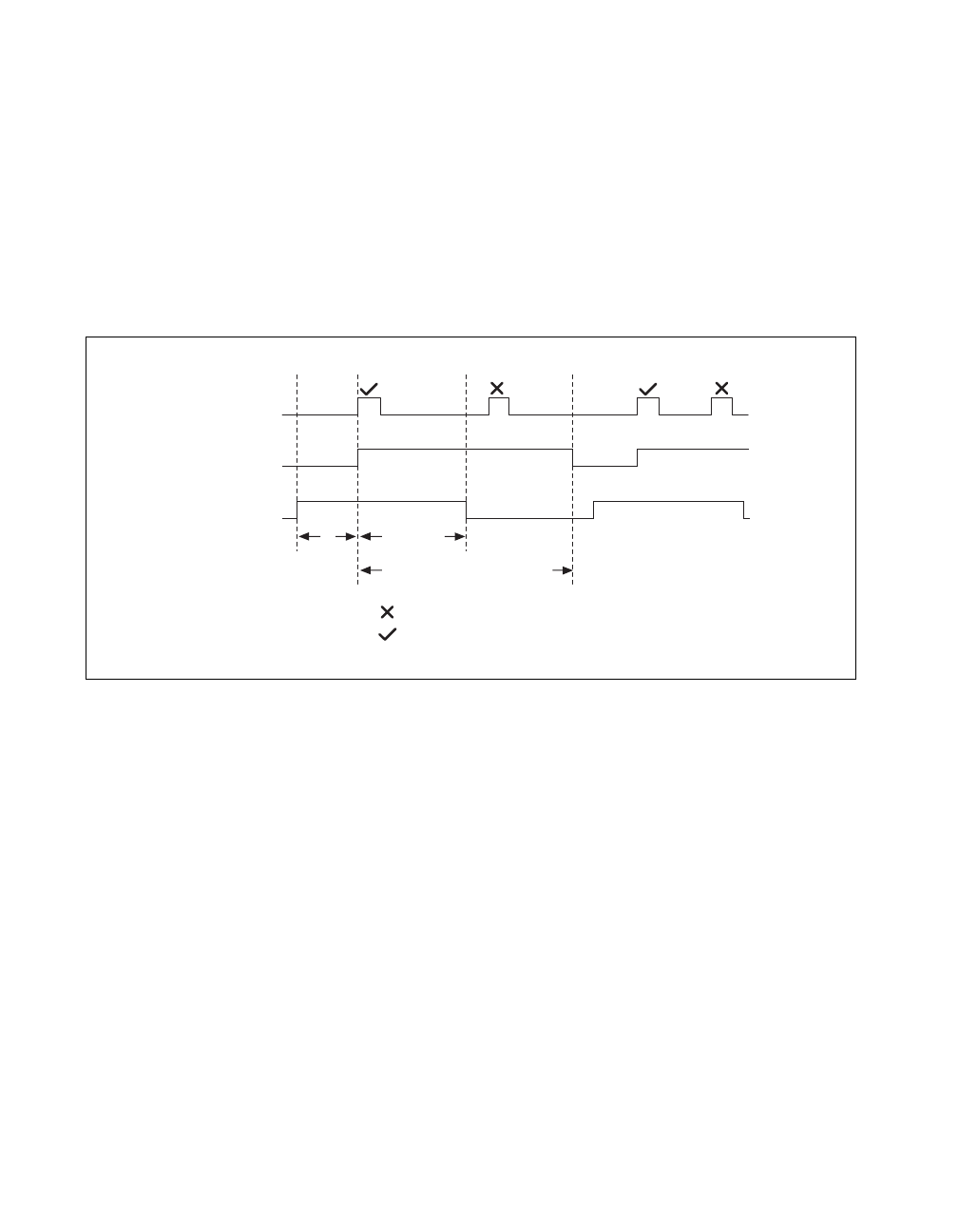
Chapter 2 Hardware Overview
NI 5911 User Manual 2-12
©
National Instruments Corporation
When a trigger is received during acquisition, the trigger counter is loaded
with the desired hold-off time. Hardware then rejects all triggers until the
counter has expired or the current acquisition completes, whichever is
longer. The time the acquisition takes to complete from the time a trigger
occurs is (posttrigger samples) / (sample rate(MHz)). If this time is larger
than the trigger hold-off time, the trigger hold-off has no effect because
triggers are always rejected during acquisition. Figure 2-8 shows a timing
diagram of signals when hold-off is enabled and the hold-off time is longer
than posttriggered acquisition.
Figure 2-8. Timing with Hold-Off Enabled
Memory
Samples are acquired into onboard memory on the NI 5911 before being
transferred to the host computer. The minimum size for a buffer is
approximately 4,000 8-bit oscilloscope mode samples or 1,000 32-bit
decimation mode samples. Software allows you to specify buffers of less
than these minimum sizes. When specifying a smaller buffer size, the
minimum number of points are still acquired into onboard memory, but
only the specified number of points are retrieved into the host computer’s
memory.
The total number of samples that can be stored depends on the size of the
Acquisition Memory Module installed on the NI 5911 and on the size of
each acquired sample.
Trigger
Hold-Off
Acquisition
In Progress
Pretrigger
Data
Posttrigger
Data
Hold-Off Time in nanoseconds
(Adjustable between 40 ns and 171.8 s)
= Trigger Not Accepted
= Trigger Accepted
CBIHWum.book Page 12 Thursday, October 29, 1998 1:56 PM
